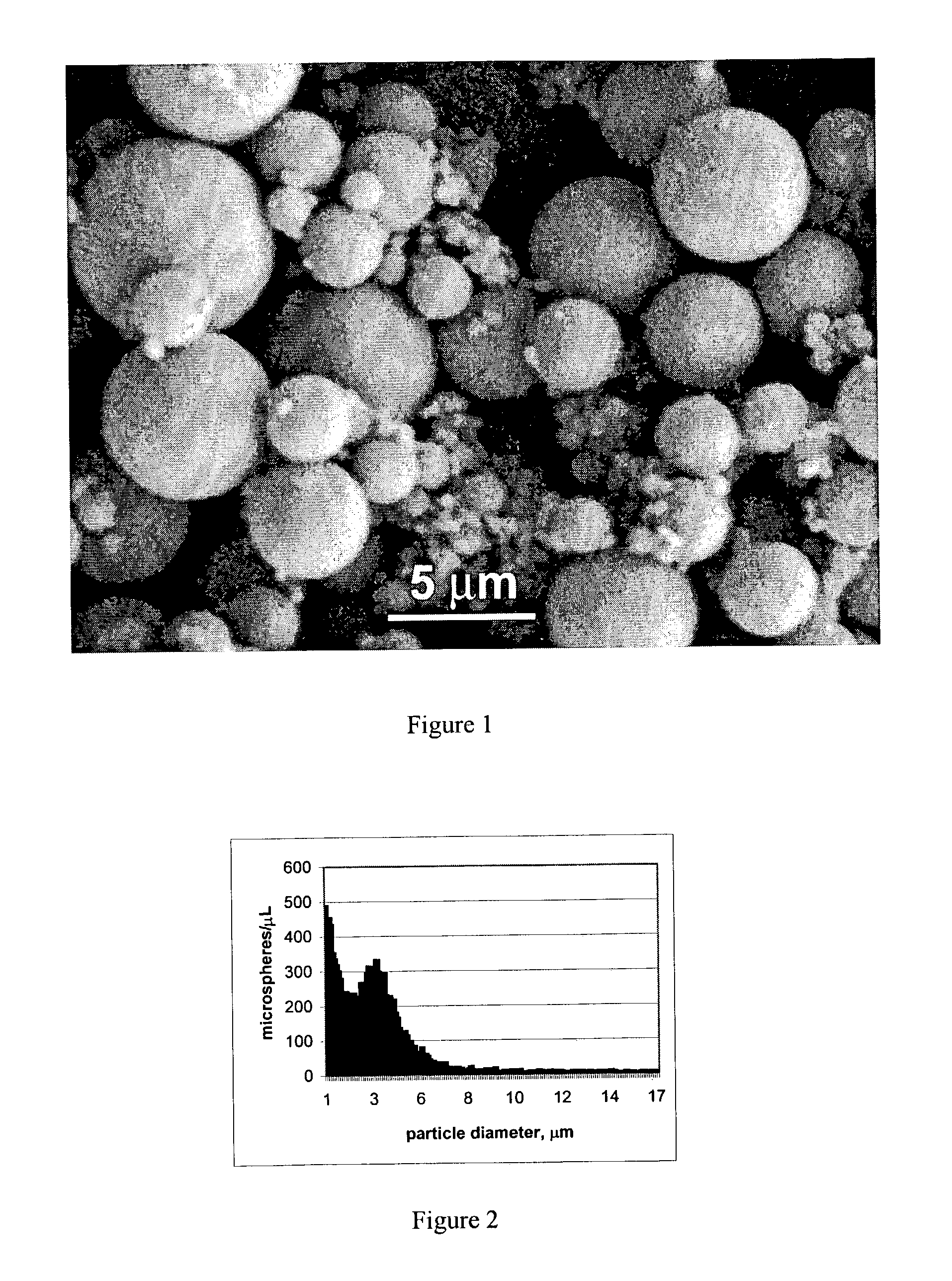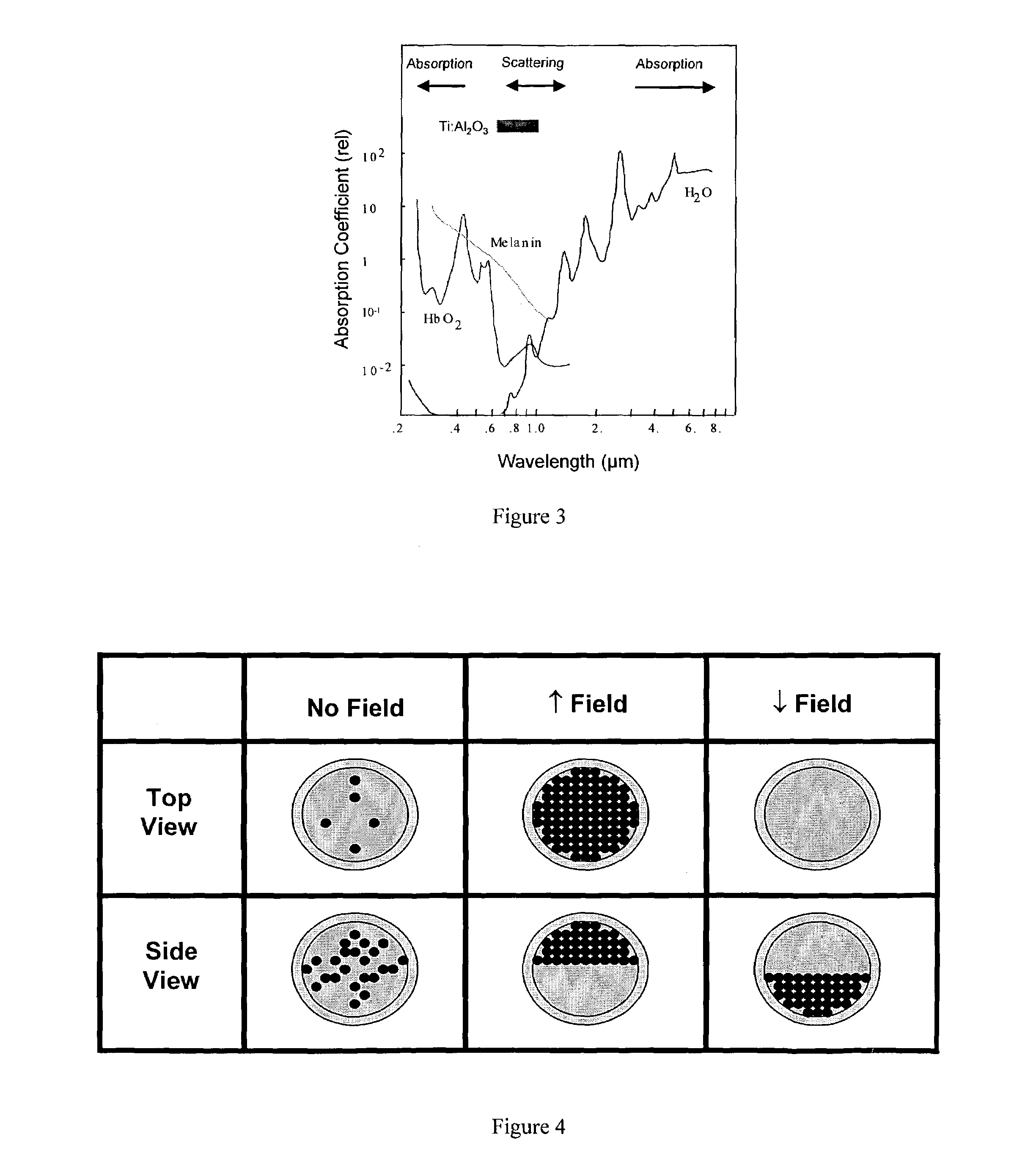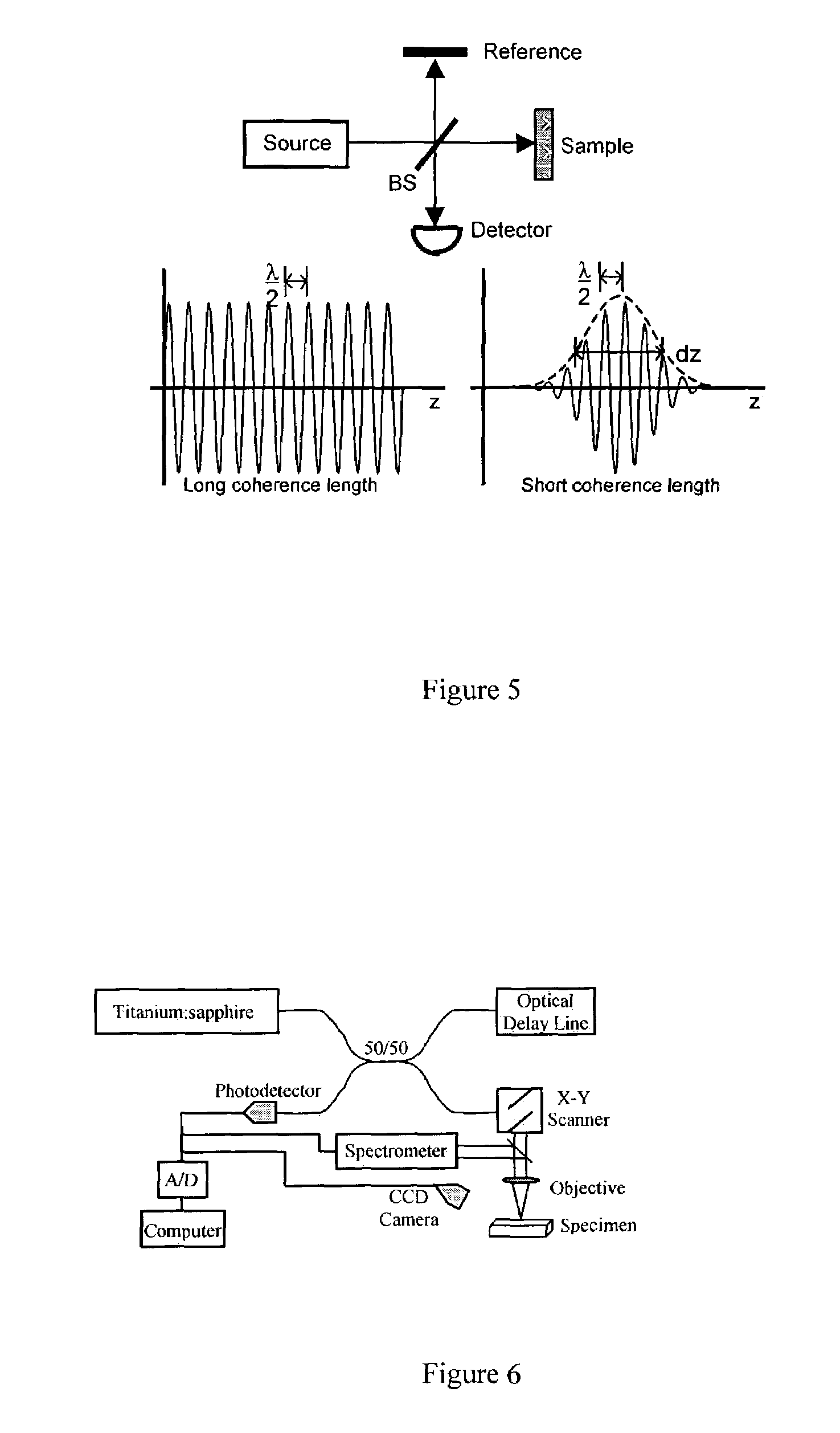Optical contrast agents for optically modifying incident radiation
a technology of incident radiation and optical attenuation, which is applied in the field of optical contrast agents, can solve the problems of limited image depth, insufficient emulsification, and insufficient production of long-lived microparticles, and achieve the effect of enhancing image contras
- Summary
- Abstract
- Description
- Claims
- Application Information
AI Technical Summary
Benefits of technology
Problems solved by technology
Method used
Image
Examples
examples
[0082]The examples herein are illustrations of various embodiments of this invention and are not intended to limit it in any way.
[0083]The contrast agents investigated in this study are similar to those used in ultrasound echocardiography [4]. These agents are hollow microparticles 0.5 to 5 microns in diameter with a 50 Å thick protein shell. FIG. 1 shows a scanning electron micrograph of the microparticles. The microparticles utilized were air-filled and produced by sonicating a 5% weight per volume solution of bovine serum albumin (BSA) in water. The high-intensity ultrasound necessary for the reaction was generated by a titanium horn with tip diameter of 0.5 inches, driven at 20 kHz. The BSA solution was sonicated for 3 minutes at an acoustic power of 76 W / cm2 [3]. The microparticles may be re-suspended with 0.1 M 4-morpholine ethane sulfonic acid, pH=4.5. The diameter of the microparticles is dependent on the acoustic power and the frequency of ultrasound used. Diameters ranging...
PUM
| Property | Measurement | Unit |
|---|---|---|
| wavelength | aaaaa | aaaaa |
| depths | aaaaa | aaaaa |
| frequency | aaaaa | aaaaa |
Abstract
Description
Claims
Application Information
 Login to View More
Login to View More - R&D
- Intellectual Property
- Life Sciences
- Materials
- Tech Scout
- Unparalleled Data Quality
- Higher Quality Content
- 60% Fewer Hallucinations
Browse by: Latest US Patents, China's latest patents, Technical Efficacy Thesaurus, Application Domain, Technology Topic, Popular Technical Reports.
© 2025 PatSnap. All rights reserved.Legal|Privacy policy|Modern Slavery Act Transparency Statement|Sitemap|About US| Contact US: help@patsnap.com



